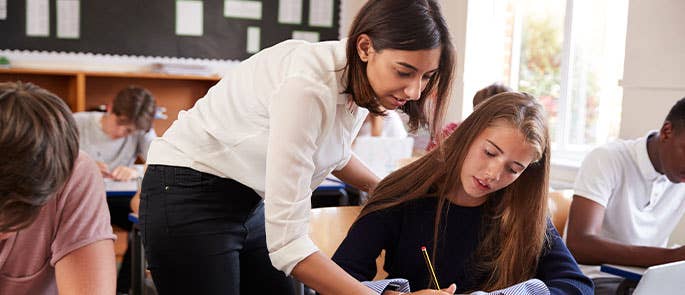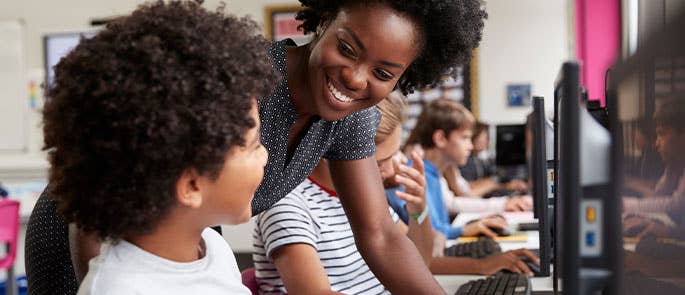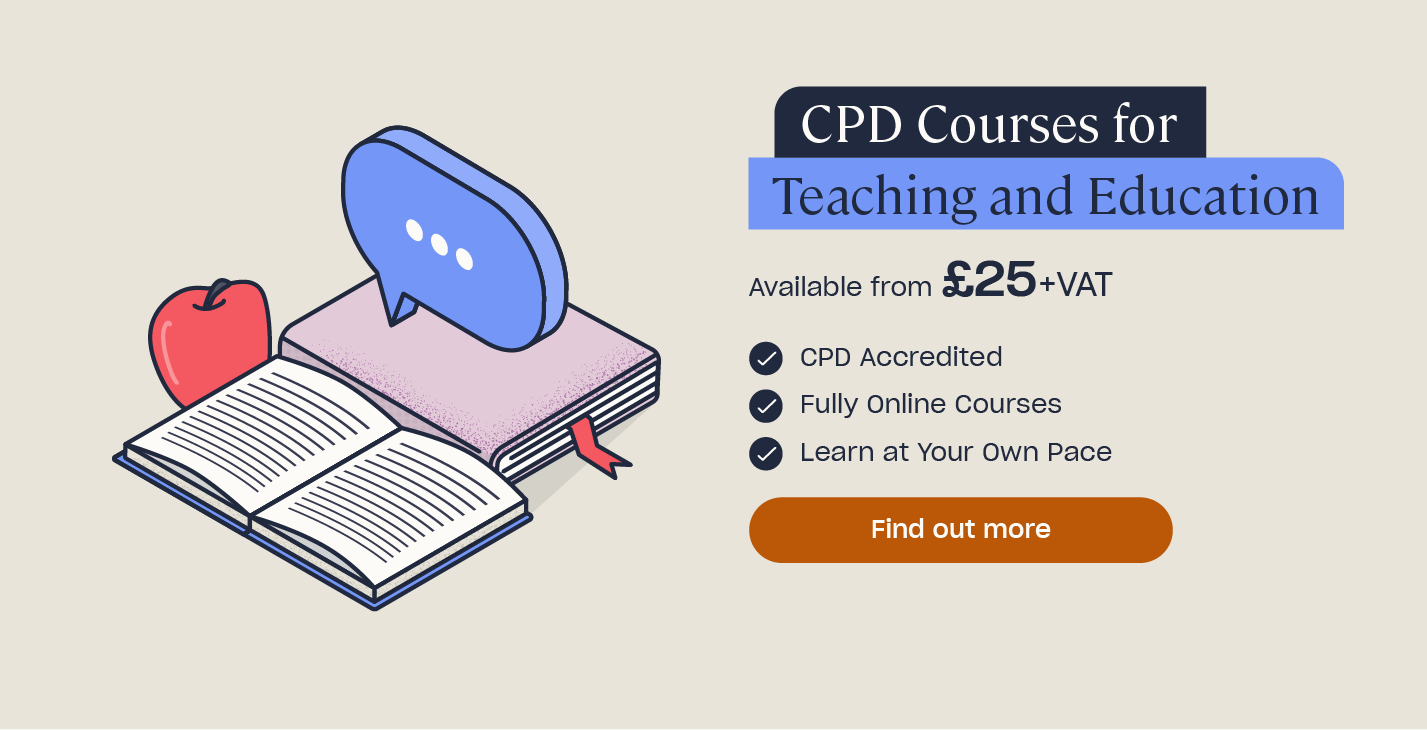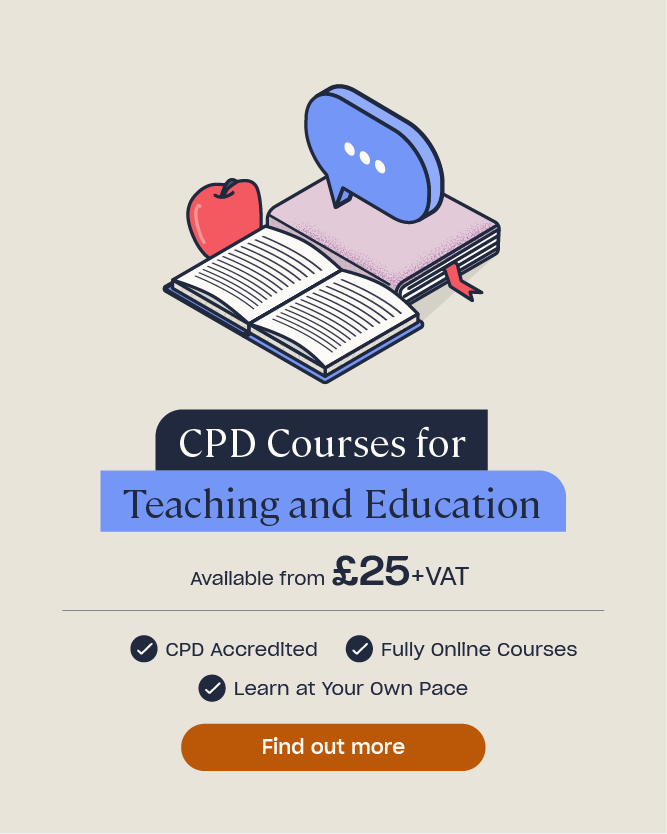What is Effective Instruction in the Classroom?
Effective instruction is not only about delivering information to students, but about engaging learners, building understanding and encouraging independence. It’s important for teachers to be aware of how to instruct students effectively in order to support learners of all backgrounds and all abilities to achieve their potential. In this article, we’ll explain what effective instruction is and provide some principles and strategies to ensure effective instruction in the classroom.

What is Effective Instruction?
Effective instruction refers to teaching practices that promote learning for all students of all abilities. It’s a teaching method that involves purposeful planning, clear communication of objectives and consistent assessment to ensure everyone understands and can succeed.
Effective instruction combines high expectations with supportive guidance, enabling students to grasp new concepts, apply their knowledge and think critically.
Elements of Effective Instruction
There are several interconnected elements of effective instruction that guide teachers in planning and delivering lessons that are engaging and impactful. These elements ensure that instruction is always purposeful, inclusive and adaptable to the needs of all learners.
Key elements of effective instruction include:
Clarity of learning goals 
Teachers should make objectives explicit so that students understand what they are learning and why.
Engaging teaching strategies 
Lessons should use varied teaching methods, such as problem-solving, active learning and kinaesthetic learning, to maintain interest and encourage participation.
Assessment of learning 
Ongoing assessment allows teachers to identify gaps, provide feedback and adapt teaching to meet individual needs.
Supportive learning environment 
A safe and inclusive classroom atmosphere encourages risk-taking and resilience among students.
Reflection and continuous improvement 
Teachers should regularly evaluate their own practice and seek ways to improve their teaching through professional development.

Importance of Effective Instruction
Effective instruction is fundamental to both student achievement and teacher development. It ensures that all students can access the curriculum, make progress and achieve their potential, whilst giving teachers a better understanding of their students and their needs.
Benefits of effective instruction for teachers include:
- Greater confidence in lesson delivery.
- Improved classroom management through structured routines.
- A more creative and explorative classroom environment.
- More accurate assessment of student understanding.
- Stronger relationships with students through clarity and consistency.
Benefits of effective instruction for students include:
- Enhanced engagement and motivation to learn.
- Clear understanding of expectations and learning objectives.
- Improved academic outcomes and problem-solving skills.
- Increased focus, security and independence.
Effective instruction is especially important when teaching students with Special Educational Needs and Disabilities (SEND), as it helps teachers to create inclusive classrooms where every learner, no matter their ability level, has the opportunity to succeed. To support students with SEND, teachers should:
- Use varied teaching methods to accommodate diverse learning styles.
- Use clear scaffolding to help students reach their goals.
- Provide accessible materials and supportive technologies where appropriate.
- Create a sense of belonging by promoting inclusion and understanding.
- Collaborate with support staff, parents and specialists to develop tailored learning strategies where required.
Looking to Learn More?
All students deserve to achieve their full potential in the classroom. Our online Special Educational Needs and Disabilities (SEND) in the Classroom course helps teachers understand more about how to support all children, no matter their level of ability.
Principles and Strategies for Effective Instruction
Effective instruction is based on a few key principles that help make learning meaningful and long-lasting. These include being clear, keeping students engaged, responding to their needs and taking time to reflect.
At its heart, effective teaching is about connecting with learners. When teachers plan thoughtfully, explain ideas clearly and show understanding, they create classrooms where students not only learn but truly flourish.
Five strategies for effective instruction include:
- Explicit teaching – clearly demonstrate new skills and provide guided practice before expecting independent work.
- Active learning – encourage students to discuss, question and apply their knowledge through tasks and collaboration.
- Feedback and assessment – offer timely, specific feedback that helps students understand their progress and areas for improvement.
- Differentiation – adapt lessons to meet varied abilities and learning preferences within the classroom.
- Reflective practice – evaluate lesson outcomes and adjust teaching methods to improve effectiveness.
Effective instruction is at the heart of successful teaching and means having clear goals, using inclusive approaches and always looking for ways to improve. When teachers plan carefully, explain things clearly and support every learner, the classroom becomes a place where students can grow in confidence, enjoy learning and reach their full potential.
Further Resources:
- CPD Courses for Teaching and Education
- What is Effective Teaching?
- Instructional Coaching: Benefits & Strategies
- Nonverbal Communication in the Classroom
- Effective Classroom Management: Tips for Teachers
- What is Explicit Instruction in Teaching?











